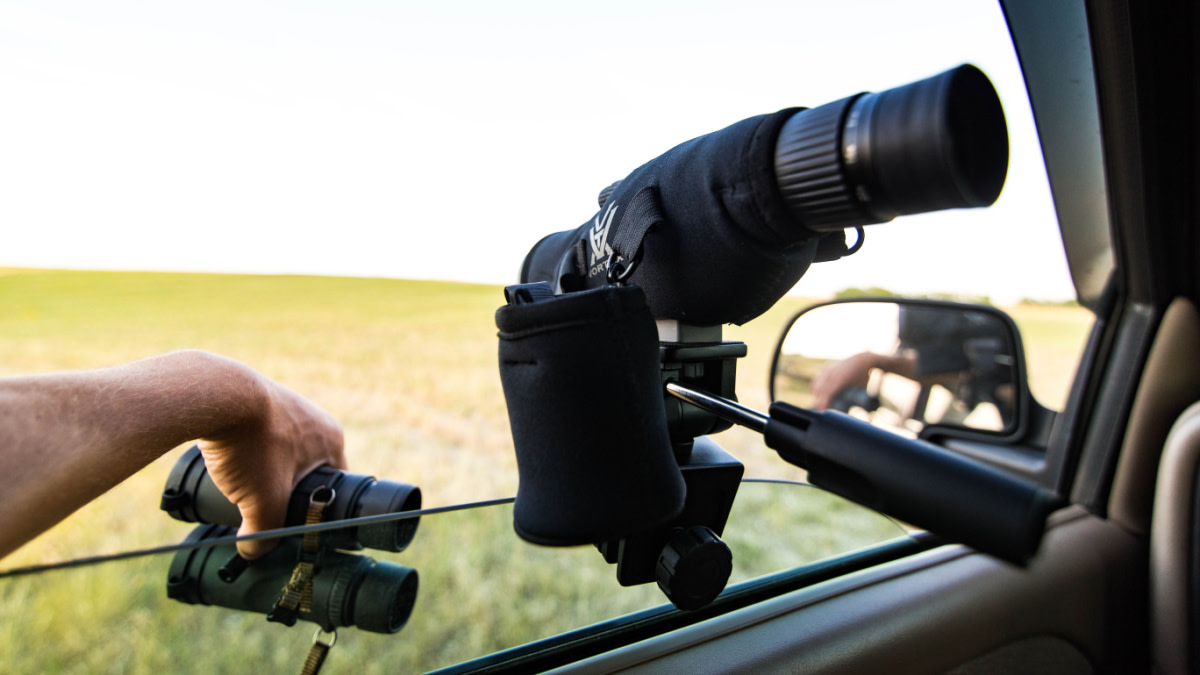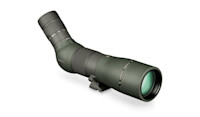
The sinking sun, buzzing mosquitoes, clinging humidity, and wafting aroma of cornsilk. And yes, of course, the flicking white tails amidst a distant sea of green.
I love this scene more than any other during the whitetailer’s off-season. Whether I’m driving the neighborhood or staking out the back corner of a bean field, the simple joy of glassing summertime deer is hard to beat.
But watching deer in the summer is more than just a great way to scratch the whitetail itch. It can also provide invaluable insight into the quality of deer in an area, the age ranges of specific bucks, and even late summer patterns that could translate to early hunts. But to do this right and take full advantage of the rewards summer glassing can provide, you need the right tools.
Optics The first and most obvious gear choice to consider is the optical equipment you’ll use to glass those summertime deer. When covering this first base it’s important to think through the scenarios you’re likely to be in when summer scouting.
Most glassing sessions at this time of year happen from a truck while driving backroads, from a seated position on a hillside, or some other elevated location. As far as time of day is concerned, deer are most active in the summer during dawn and dusk, so most summer glassing is done in or near low light conditions. And in terms of distance, it’s fair to assume you’ll be pretty far away from any deer you’re viewing, since most summer glassing is done over large crop fields, clear cuts, or other openings. Given this set of circumstances, a high-quality optic is obviously preferential and the age-old, cliché optics advice holds true; buy the best you can afford.
In a perfect world, I would have two pairs of optics at my disposal when glassing in the summer. The first would be a high-quality pair of binoculars of at least 10X power or more. If you have the luxury of owning a set of binos for long-range glassing alone, something like the 18X power Vortex Kaibab HD binoculars are ideal. Binoculars are crucial for the first stage of any summer glassing session when scanning a field or distant opening for a buck worth studying.
“Binoculars are great for quickly scanning areas with a wider field of view,” Heartland Bowhunter TV host Mike Hunsucker said.
Once such a deer is spotted, I switch to my next set of optics. A spotting scope allows for a closer and more detailed look. I, like Hunsucker, prefer an angled model for this task.
“I am a huge proponent of the angled scope design over the straight design,” Hunsucker said. “It allows so much more left and right travel while seated in the same position without having to adjust your body as much.” His spotter of choice is the Vortex Razor 27-60x85mm Angled Scope.
Tripod If you’re using a spotting scope for summer glassing, a tripod is obviously essential. But a stabilizing tool like this can be beneficial for binocular users, too. It might seem unnecessary, but once you try glassing with tripod-mounted binoculars, you’ll feel the difference, especially if glassing for long periods or at especially long distances.
In addition to simple stability, I place high priority on smoothness of panning. When moving my scope or binoculars from side to side or up and down, I want the ability to make small, smooth movements to find or follow deer. Bargain basement tripods are notorious for not having this ease of adjustment and I can say from experience how miserable it is to use something with high resistance when trying to zoom in on a big whitetail buck a half-mile away.
Digiscoping Phone Adapter No matter how nice your optics are, you will get tired after peering through a tiny hole for long periods of time. This is where digiscoping phone adapters come to the rescue.
“These provide a nice break from the eye-strain of looking through a scope or binoculars over an extended period of time,” Hunsucker said.
This tool connects an iPhone directly to a spotting scope, immediately creating a 6-inch viewing screen and a much more comfortable way to check out what’s on the other end of the field. Perhaps most importantly, you can photograph or video whatever deer you’re glassing, making your observations permanent and reviewable in the future. Whether you’re trying to ID specific bucks, estimate age, or observe travel patterns, the ability to archive your sightings and study them again is invaluable.
This one minor addition to your kit might make the biggest difference in your summer glassing success and will make it more fun, too. My model of preference is the Phone Skope Universal Lollipop adapter that can fit any phone model.
Get Out There Whether you have these items or not, get outside more this summer and watch those whitetails. This equipment will certainly improve your experience, but you’ll have fun and learn about deer either way. And of all items on your list of summer glassing necessities, those should be at the top.
Feature image via Captured Creative.







